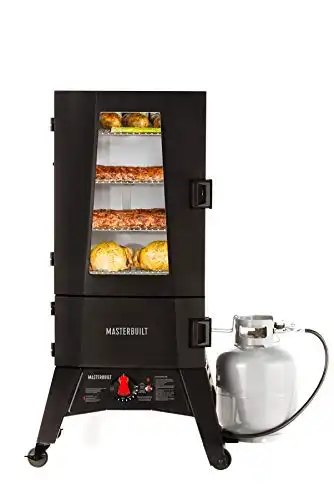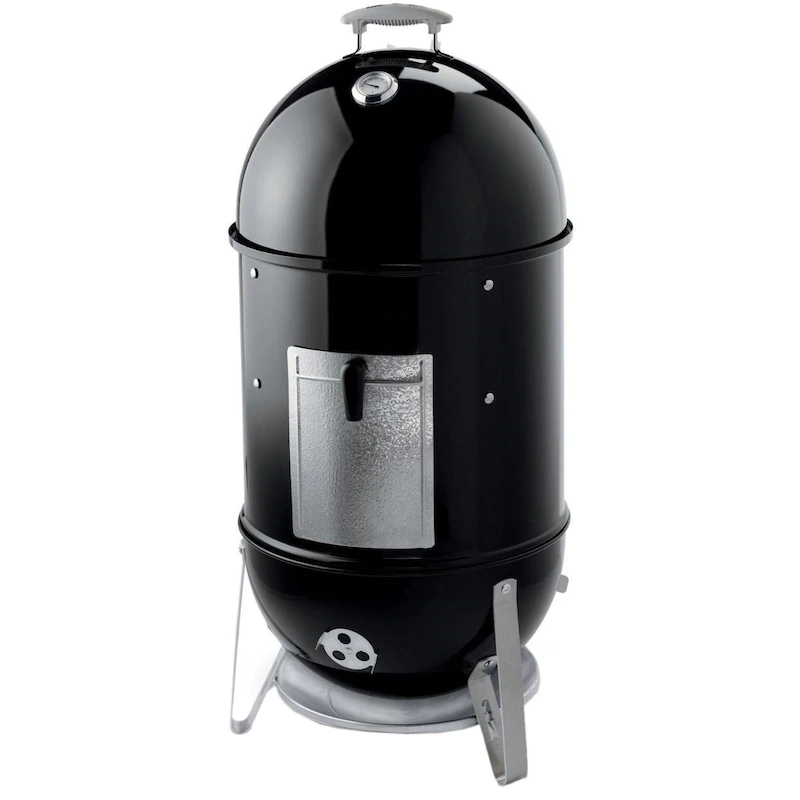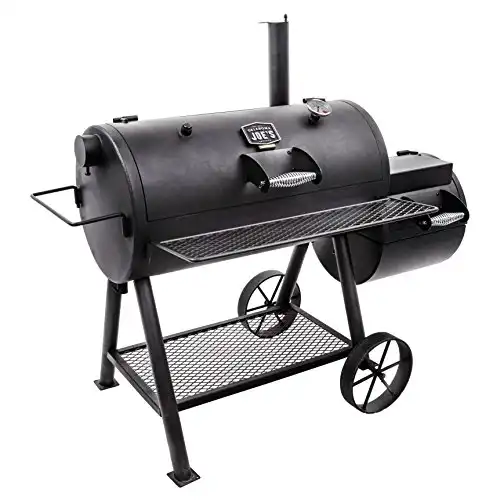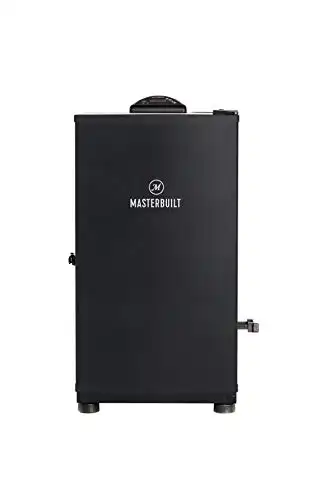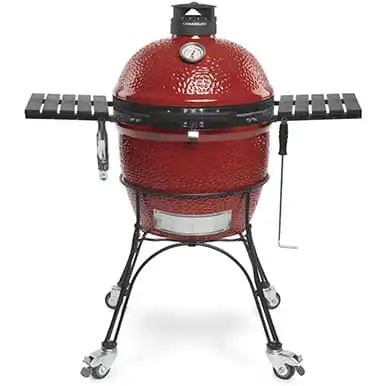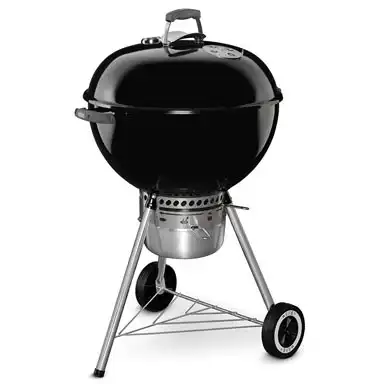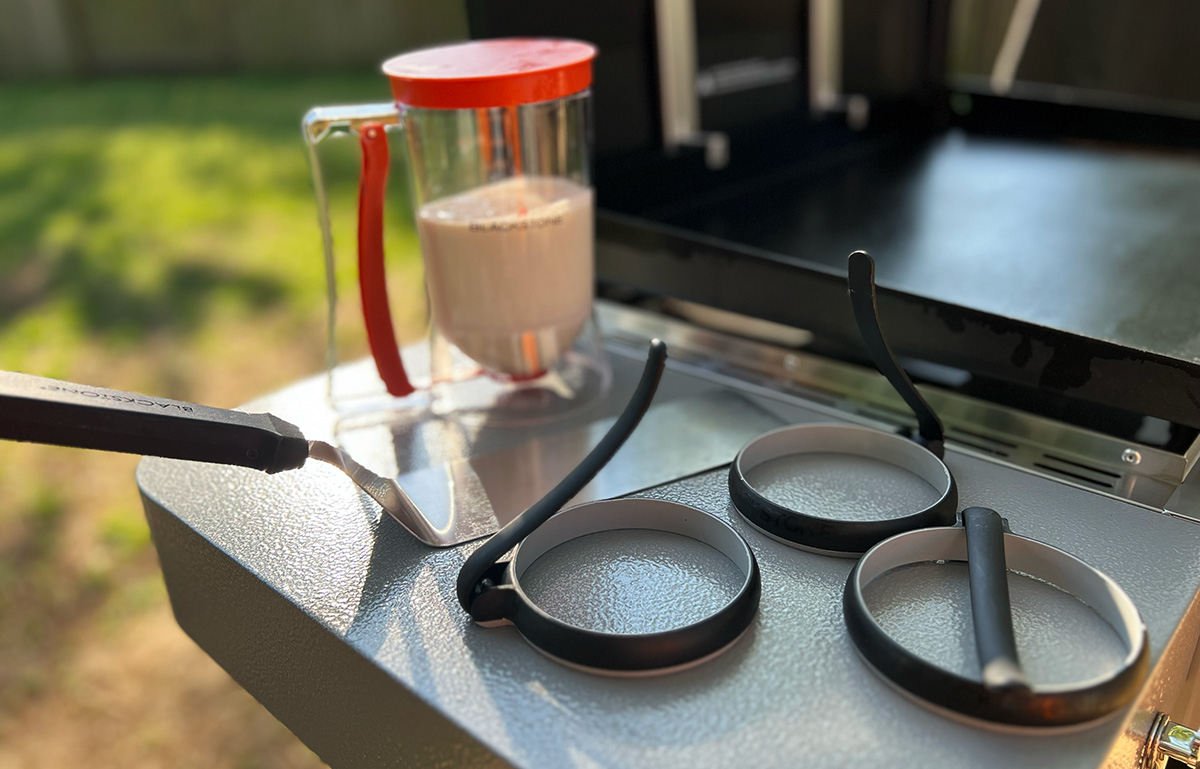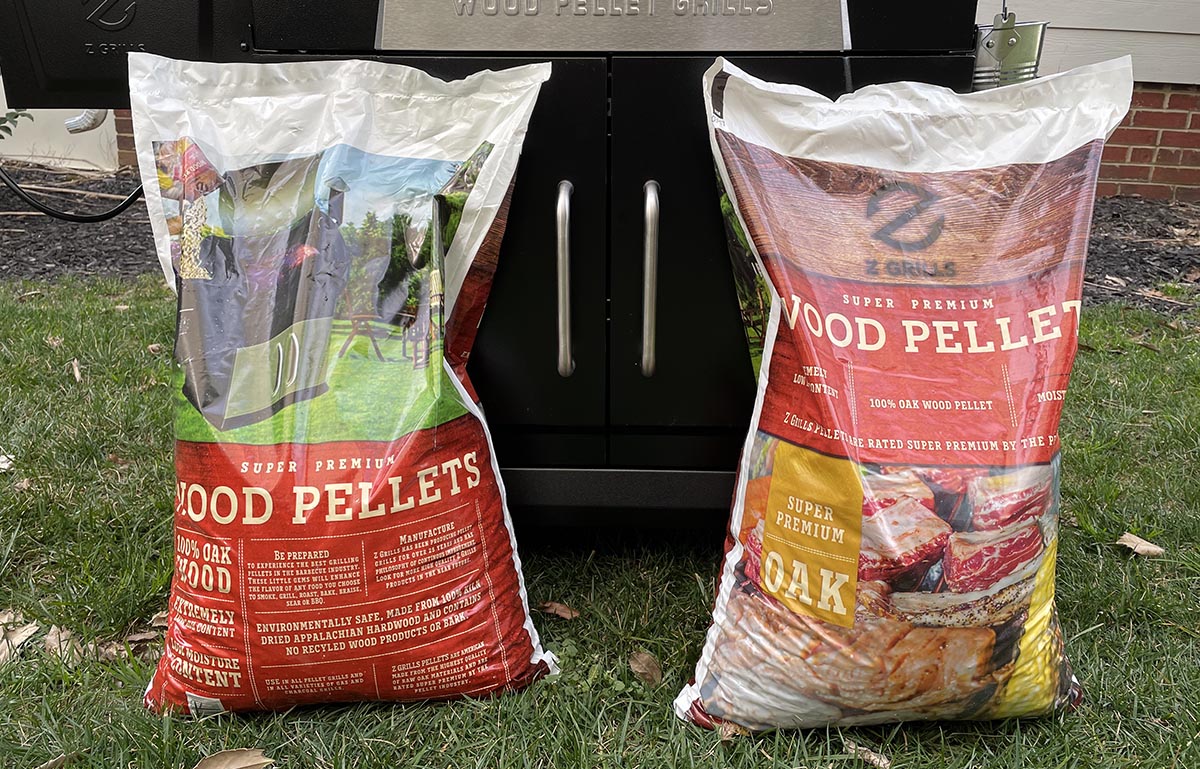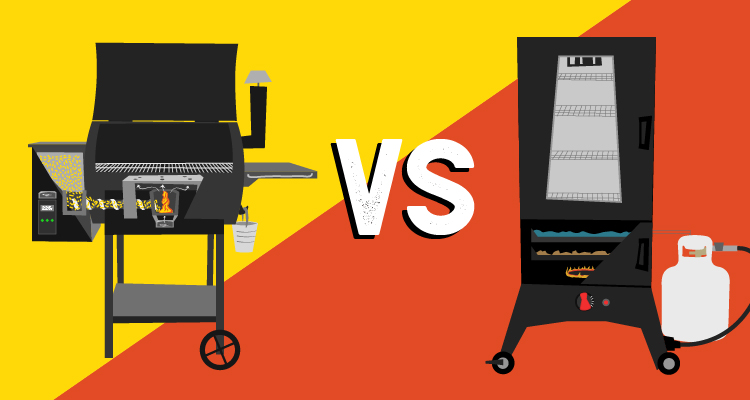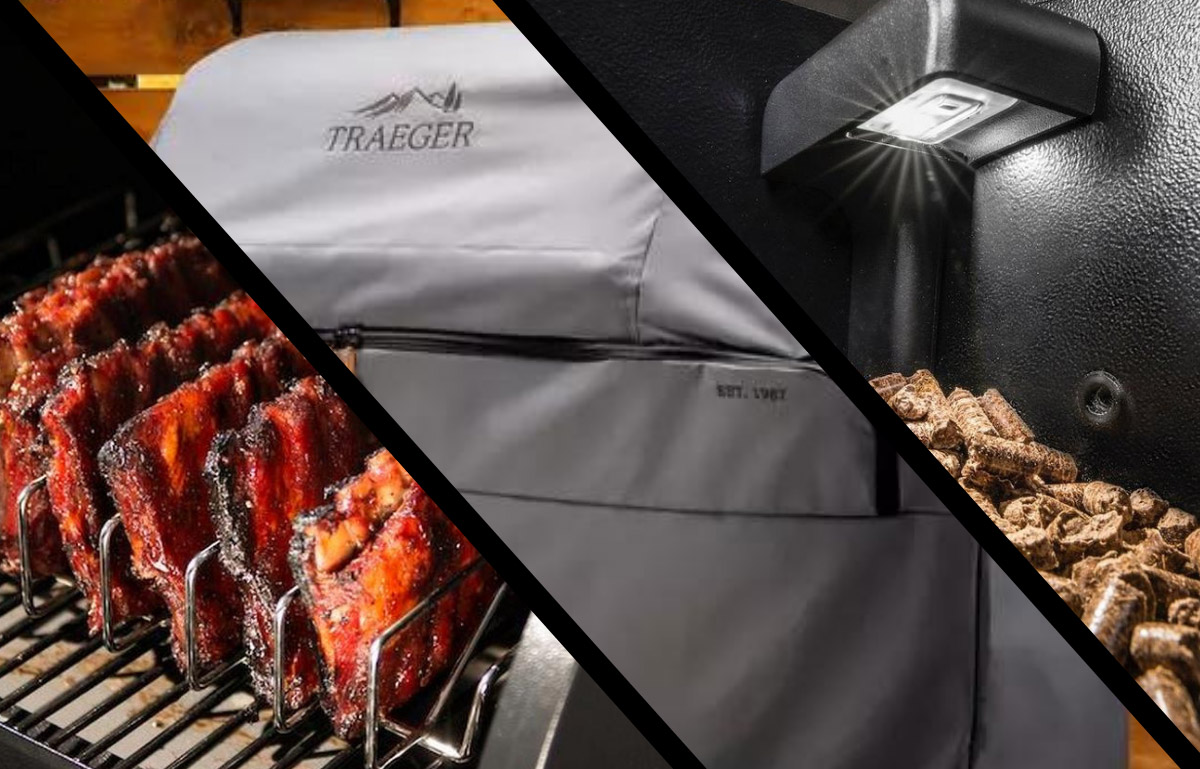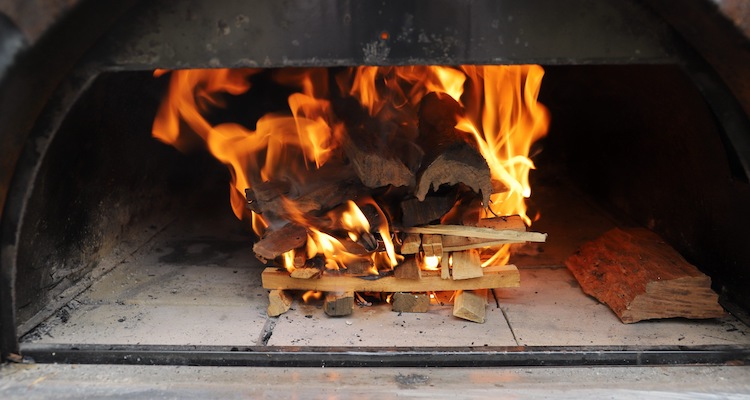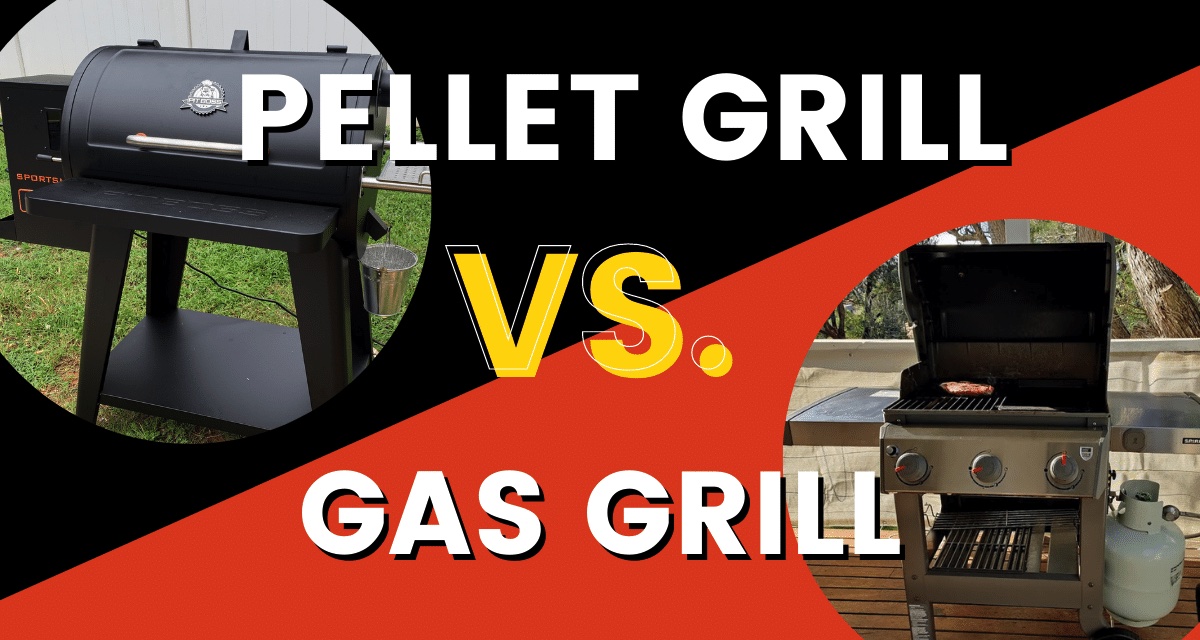7 Types of Smokers (And Which One You Should Buy)
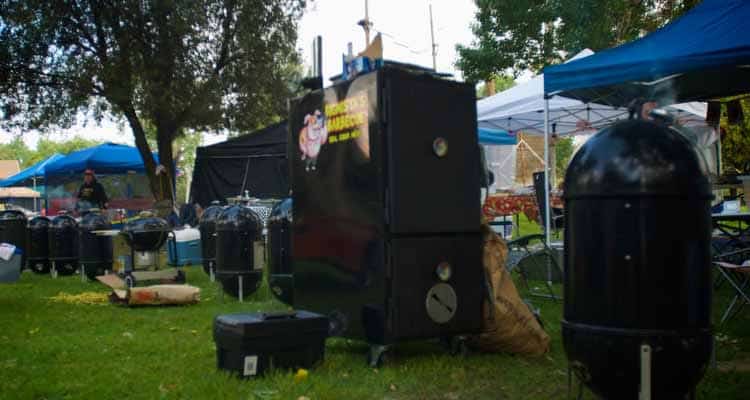
So you want to get into smoking meat but are not sure which type of smoker is right for you?
There is a vast range to choose from, and it’s easy to get bogged down in analysis paralysis.
To make it simple for you, I’ll list all the common types of smokers, along with their pros and cons. I’ll also provide links to reviews of some of the most popular models.
The 7 most common types of smoker
1. Pellet smokers
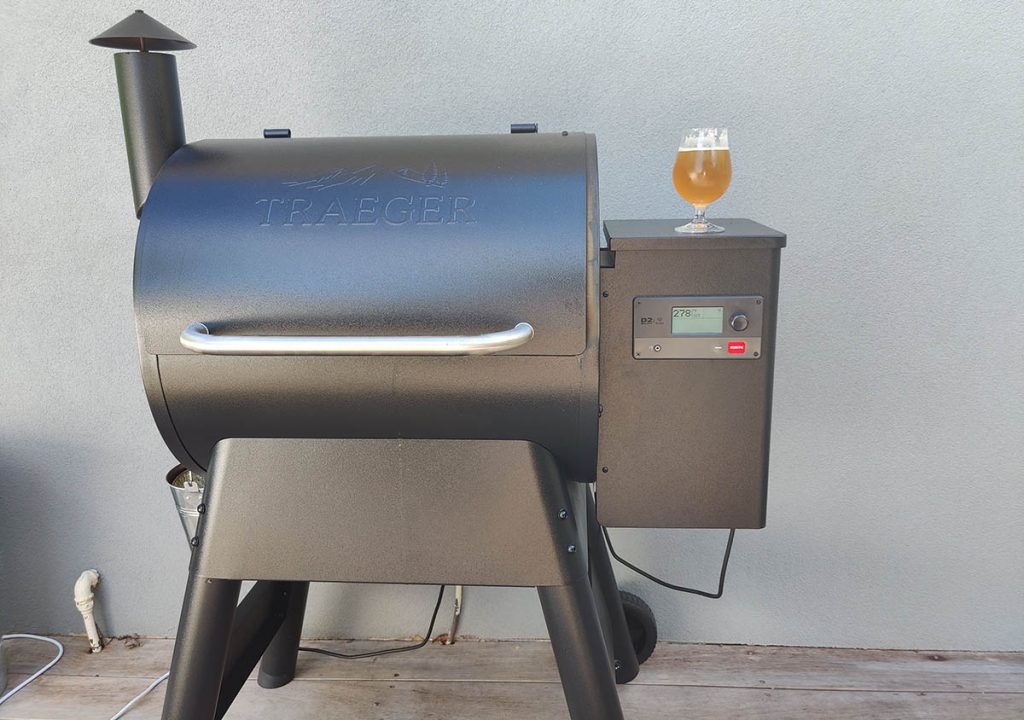
The most popular style of smoker at the moment is the pellet smoker, also known as a pellet grill.
The great benefit of a pellet smoker is the ‘set and forget’ style of cooking. Plug the grill in to electricty, add pellets, and set your desired temperature on the digital controller.
They’re also incredibly versatile. Most models can be run anywhere from 160-500°F allowing you to use them as an oven, grill, or smoker.
How do they work?
Pellet smokers burn wood pellets which are made from compressed sawdust.
These pellets sit in a hopper on the side of the smoker and are fed into a firebox by an auger. Inside the firebox is a heated metal rod that causes the pellets to combust, creating both smoke and heat in the cooking chamber above.
Pellet smokers use built-in thermometers to keep the temperature stable. To create consistent heat, they change the airflow and amount of pellets fed into the firebox.
Pros
- Pellet smokers combine the flavor of actual wood smoke with a cooking system that you can set and walk away from
- They are versatile, acting as a smoker, grill, and oven all rolled into one.
- Most models can easily fit enough wood pellets for an overnight cook
- The wood pellets burn down to nearly nothing, meaning the only cleaning they need is a quick vacuum out with a shop vac after every few cooks.
Cons
- Expect to pay at least $400 for an entry-level pellet grill and up to $2500 for something made in the USA like a Yoder
- You’ll need to plug the grill into electricity to power the heating rod that ignites the pellets, the fan, and the auger
- Expect to pay around $20 for a 20lb bag of pellets, which is enough to run at 225°F for around 16 hours.
Who should buy a pellet smoker?
If you like the idea of making barbecue but don’t have the free time or desire to sit around the smoker babysitting all day, then a pellet grill is a great option.
It’s nice and versatile. If you only have room for one cooking apparatus, then one that can cook, smoke, and grill is ideal.
As someone with three young kids, a pellet grill is convenient enough that I can still fit plenty of cooks in per week while still being free to drive to the shops or sporting events.
To see a list of our favorite pellet grills, head over to our best pellet grills guide.
2. Propane/Gas smokers
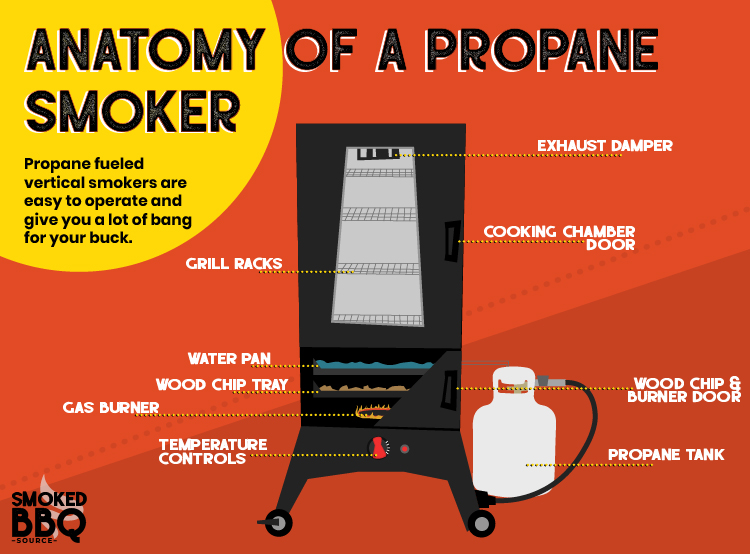
Gas smokers, surprise, surprise, use natural gas or propane to produce heat.
The terms ‘gas’ and ‘propane’ are used fairly interchangeably when it comes to fuelling these smokers. Propane is also sometimes referred to as Liquefied Petroleum Gas (LPG)
Unless you have a direct gas hookup at home, the gas will come from refillable bottles.
How do they work?
Most gas smokers are built ‘cabinet-style’ with the burner and vents at the bottom and the chimney and dampers at the top. The gas travels from the bottle through a manifold and down to the cooking section. It is then ignited as it flows out of the burner valves.
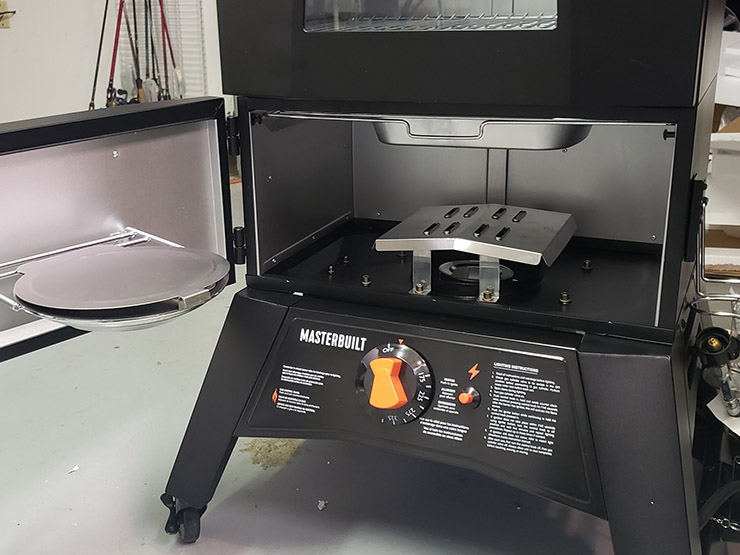
Much like an electric smoker, gas smokers don’t naturally produce smoke, so wood chips are used to create the smokey flavor.
Pros
- Gas smokers are simple to use and propane is a widely available fuel.
- The temperature of a gas smoker is easy to control, and it’s much easier to make changes to the heat than with a charcoal.
- You can get your gas smoker started much faster than a charcoal one. You can go from cold to cooking in around 15 minutes, which is excellent if you are strapped for time.
Cons
- While gas does produce more combustion chemicals and, therefore, more flavor than an electric smoker, some people do complain of a bland taste.
- To be safe, you’ll probably need two gas bottles just to make sure you don’t run out of gas from a half-filled one. If your tank is running low, you’ll also need to check it about every 30 minutes or risk coming out to find your smoker has died.
- Accurate and consistent temperatures
- Beginner-friendly
- Easy to clean
- Lack of a seal for the cabinet doors
- Several cosmetic defects
Who should buy one?
Gas smokers are great for pitmasters who want a little more of the flavor-enhancing combustion chemicals than you would get with an electric smoker, but none of the cleanup associated with charcoal smokers or the cost of a pellet smoker.
Because their gas bottle fuel source is quite portable and the smokers themselves tend to be quite light, a gas smoker would also suit someone looking for something they could take camping or to cookouts.
Learn more in our guide to the best propane smokers.
3. Charcoal Smokers
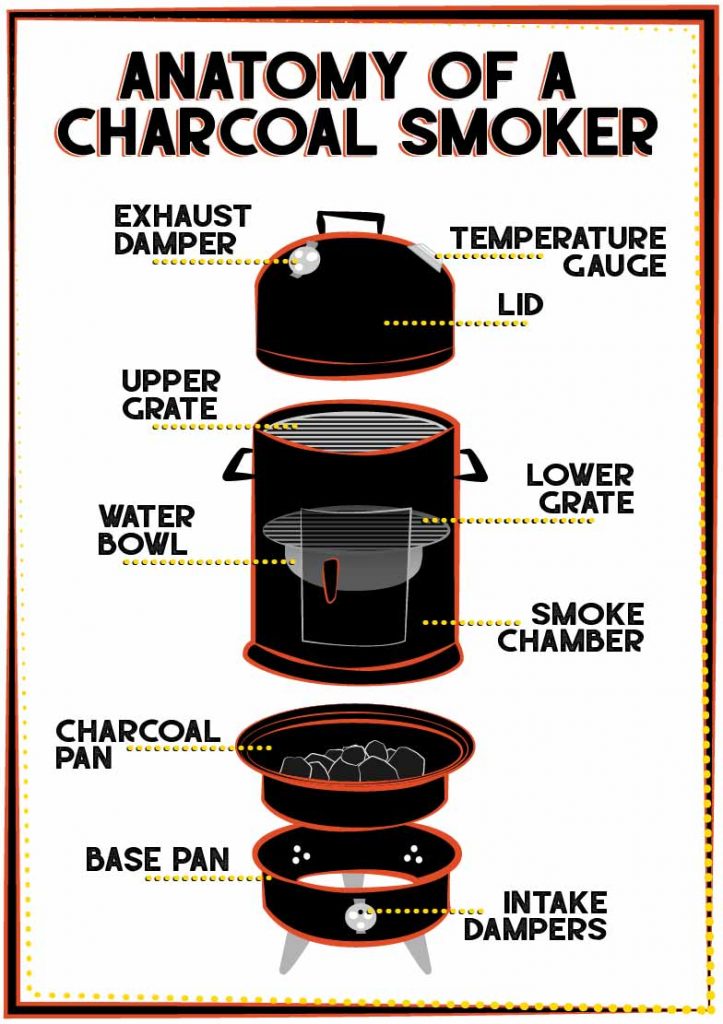
Charcoal smokers come in a range of shapes and sizes, from the rugged Weber Smokey Mountain to eye-catching ceramic kamado ovens like the Big Green Egg.
Charcoal adds more smoke flavor than food cooked with gas, electric or wood pellets. The tradeoff for this extra flavor is that charcoal smokers tend to be a little more labor-intensive, requiring more set-up, babysitting, and cleaning.
How do they work?
When wood is above 1,000°F, most of the non-carbon organic compounds are burnt off, and the resulting ‘char’ left behind burns cleanly and doesn’t produce a lot of smoke. This char is then formed into little briquettes we call charcoal.
Charcoal provides the heat for a charcoal smoker, and the chemicals produced, such as carbon monoxide, carbon dioxide, and nitrogen oxide, add to the flavor of the food. Additional smoke is created through the use of wood chunks or chips, which are typically set above or nestled within the charcoal to smolder.
The amount of heat created is regulated by air intakes near the coals. The more air that is allowed into the firebox, the hotter the charcoal will burn.
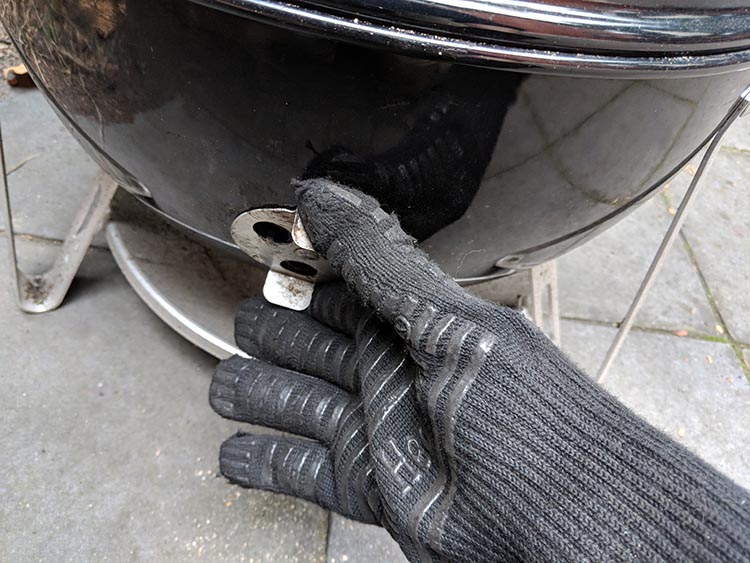
Most charcoal smokers suspend the food above the coals, drawing the heat and smoke across the food using a chimney and air dampers at the top.
Controlling the flow of air and smoke is vital to smoking with charcoal. Too much air and the food will be dry and tough, while too little air and the smoke and ash will make the food bitter.
Pros
- Charcoal smokers are second only to offset smokers when it comes to getting that deep smokey flavor
- They come in a range of styles and sizes, making it easier to find one that suits your available space
- Charcoal actively adds to the taste of the food you are cooking, and the nitrogen oxide it releases is vital to getting an authentic smoke ring
Cons
- Charcoal grills need a lot more babysitting and a little more practice and know-how than electric or gas grills. If you want a ‘fire and forget’ smoking operation, you’ll have more luck with an electric smoker
- You’ll need to light the charcoal and let it ash over before adding it to the smoker, so it can take some time to start smoking
- The ash and particulate produced by charcoal means that there’s a lot more cleaning up to do once you’ve finished smoking
- Beginner friendly
- Excellent smoke flavor
- Small footprint
- Reloading charcoal awkward
- Water pan can be a pain
Who should buy one?
If you are serious about smoking food, then the charcoal smoker is the one for you.
Their designs can be as straightforward or as complicated as you want (you can make one from an old oil drum), and while it may take some time and effort to get consistent results, it is entirely worth it.
Learn more in our guide to the best charcoal smokers or the best drum smokers.
4. Offset Smokers
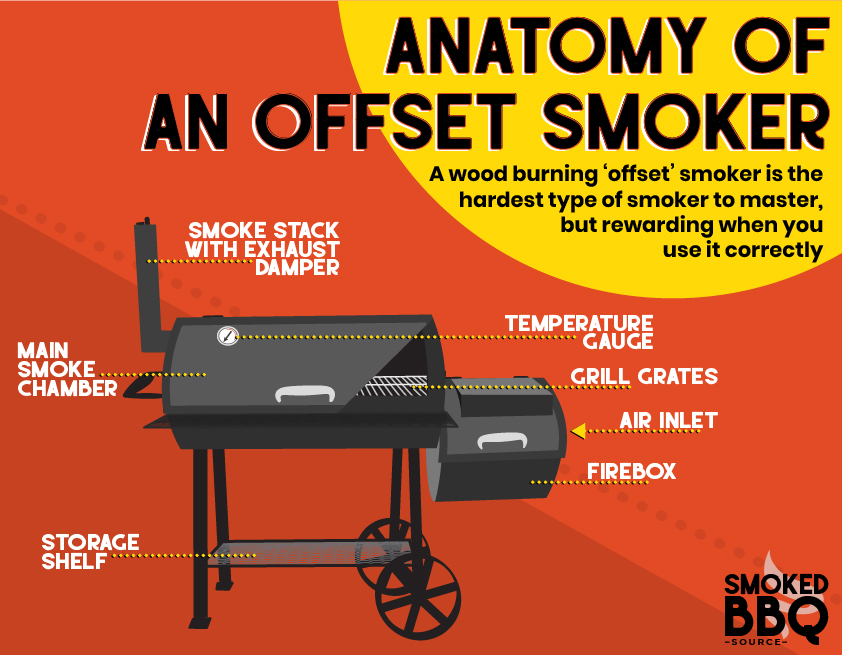
Offset smokers were initially created from unused oil drums and that heritage it pretty clear to see in their barrel-like shape.
Big, bulky, and with enough room to feed an entire city block with beautifully smoked food, owning one of these monsters is on the bucket list of most pitmasters.
How do they work?
The ‘offset’ part of the offset smoker comes from the fact that the firebox is offset to the side and below the main cooking chamber. When wood or charcoal is burnt in the firebox, the smoke and heat are drawn across the food in the cooking chamber and out of a chimney.
In a standard offset smoker, the chimney is situated opposite the firebox.

Some offset smokers use a ‘reverse flow’ system, which uses baffles to force the smoke and heat to travel both under and over the food. Reverse flow offset smokers are relatively easy to spot as they have the chimney mounted above, not opposite, from the firebox.
Pros
- The big barrel cooking chamber of an offset smoker makes it easy to cook up massive amounts of food
- Some models offer a grill plate that you can attach above the firebox, giving you a two-in-one griller and smoker
- Because the firebox is separate from the cooking chamber, you can add more fuel to the fire without letting out the heat and smoke.
Cons
- Cheap offset smokers are not worth the money. Poor construction means bad heat retention, leaks, and dry food. A good quality offset smoker can cost you over $2000 while custom and semi-custom models can run up to $10,000+.
- Starting up an offset smoker is a long process. Expect it to take an hour for you to get it up to temperature and start cooking.
- It’s also not a simple ‘fire and forget’ system like the electric smoker. Getting the best from your offset smoker means a lot of practice to learn how to use it, but when you do get it right, you can expect to produce some excellent food.
Who should buy one?
Offset smokers are an excellent buy for someone who wants to put the time and effort into getting the best from a fantastic, but not easy-to-use, smoker.
Offset smoking is as much an art form as a science, but if you’ve got the patience, it can produce massive volumes of fantastic food.
Just make sure you actually have enough room in your yard before you buy one. They are not small! We get into the pros and cons in more detail in our offset vs pellet smoker comparison, and you can see our favorite models in our guide to the best offset smokers.
5. Electric Smokers
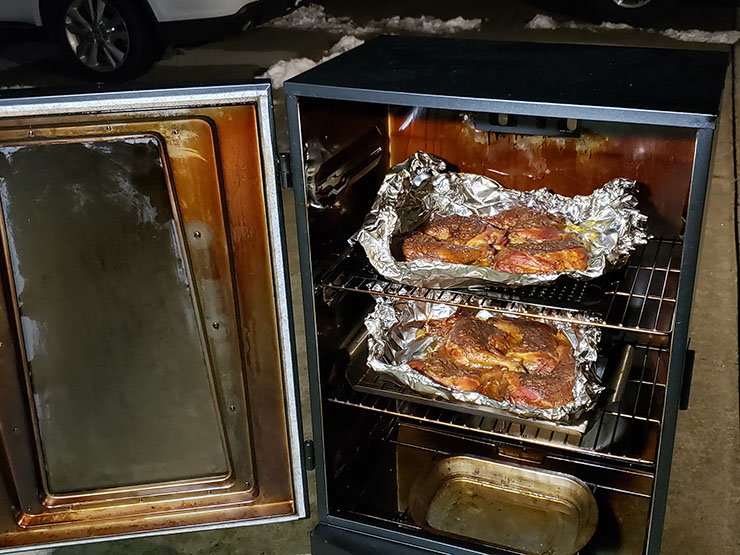
Electric smokers are the perfect ‘fire and forget’ smoking solution. You don’t have to worry about burning wood or charcoal, lugging around a propane cylinder, or dealing with much of a clean up after you’ve used one.
Using an electric smoker means setting the temperature, potentially from a Bluetooth app with some higher-end models, setting a time, and then sourcing a beer while the work is done for you.
How do they work?
Electric smokers use a heating element, rather than some form of combustible fuel, to create heat. Because there is no actual combustion involved, the smoke comes from wood chips, which are suspended above the heating element.
Most electric smokers are built vertically, with the heating element at the bottom and the wood and water pans between it and the food racks.
The water pan serves two functions.
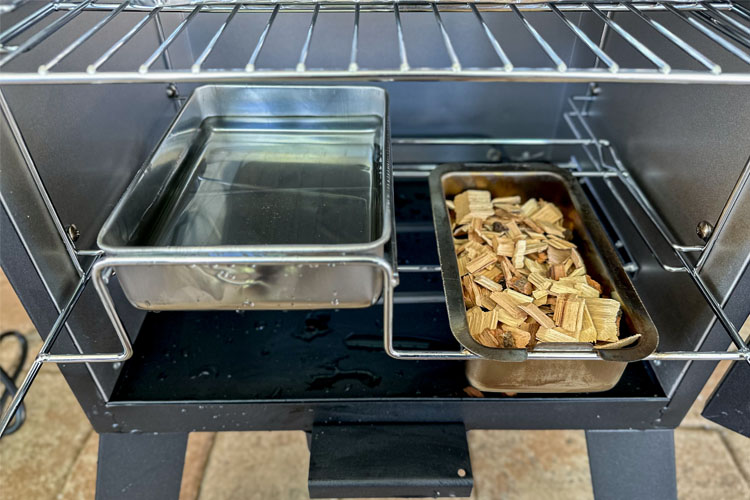
Firstly, it creates water vapor, which enhances the smokey flavor of the food.
Secondly, it creates an indirect cooking environment, shielding the meat from some of the direct heat of the element and keeping the temperature, and smoking time, ‘low and slow’.
Pros
- Electric smokers are easy to use, which makes them a great intro smoker for someone who has never used a smoker before
- You don’t require an additional fuel source, like gas, pellets, or charcoal, which cuts down on your costs and the amount of stuff you have to store when your smoker isn’t being used
- Good quality electric smokers can be relied upon to retain a consistent temperature, and they don’t run out of fuel. This means you don’t have to babysit them, so you can get on with other tasks, occasionally returning to refill the water bowl
Cons
- The flavor produced by an electric smoker is quite different from other smokers due to the lack of actual combustion and the low smolder temperature of the wood chips used to create the smoke
- The lack of combustion gasses means your meat won’t form a smoke ring, which is caused by the presence of carbon monoxide and nitric oxide
- The moist atmosphere inside an electric smoker, which is excellent for smoking delicate food like fish, cheese, vegetables, and sausages, makes it much harder to get a crisp crust on chicken skin or ribs
Electric and pellet smokers have quite a lot in common but I usually recommend pellet.
- Budget friendly and easy to use
- Easy to reload wood chips
- Minimal temperature swings
- Build quality feels cheap
- Timer feature can be annoying
Who should buy an electric smoker?
Electric smokers are best suited for people who can’t use gas, wood, or charcoal burners near where they live.
They also suit people who would prefer to just put food in a smoker, set a timer and walk away, safe in the knowledge that their food won’t get ruined because they aren’t constantly checking up on it.
Learn more in our guide to the best electric smokers.
6. Kamado Grills
When we say that Kamado grills are old school, we mean they’ve been in use for nearly 3000 years now.
Most people won’t immediately recognize the name Kamado, but they will recognize the ubiquitous Big Green Egg!
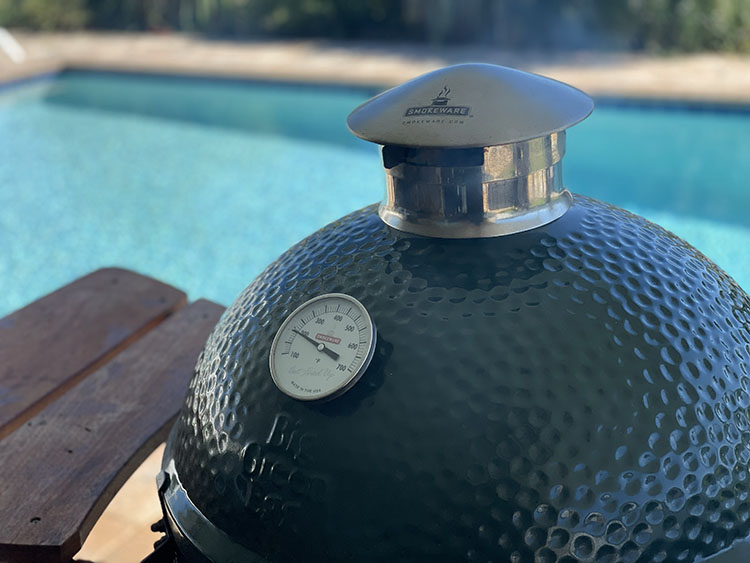
While the Big Green Egg is the most recognizable brand of Kamado grill, it is certainly not the only one on the market. There are plenty of excellent brands to choose from, and they make amazing smokers.
How do kamado grills work?
The distinctive egg shape of the Kamado grill is much more than just a stylistic choice. Based on ancient clay ovens, the shape and the thickness of the ceramic walls aids in heat and moisture retention.
Fire produces heat at the bottom of the cooking chamber, and the food is placed on a grill grate above it. The amount of heat produced is controlled by vents at the top and bottom of the grill.
Generally, if you are smoking with a Kamado grill, you’ll be putting wood chips and a water dish in there as well. Some models feature a deflector plate that sits just above the fire and reflects some of the heat.
The smoke and heat rise up over the food and are directed back onto it by the shape of the grill.
Pros
- The decreased airflow inside a Kamado means there is less chance of your food drying out, so you can expect your meat to stay moist and juicy
- Kamados are very multi-purpose and, alongside working as a smoker, can also grill, bake, and even double as a pizza oven
- If you live in a colder climate where standard grills and smokers struggle with heat retention in the winter months, then the thick walls of the Kamado grill are a great way to ensure a consistent temperature
Cons
- Great as they are, Kamado grills are not cheap. Expect to pay around $1000 for a top-end model.
- Because they only have two vents, temperature control can be a little tricky. If you overshoot, the thick ceramic walls mean it will take a while for the grill to cool.
- Because the fire sits below the food, adding more fuel and ash collection can be a tricky business.
With it's "Divide and Conquer" cooking system and thick ceramic construction the Kamado Joe Classic II offers amazing versatility, durability and value for money.
Who should buy a kamado grill?
It takes a little time to learn how to best use Kamado grills, but once you do, they are an excellent and versatile cooking system. If you want something that will allow you to bake the bread for your sandwich and smoke the meat that goes in it, then this is the grill for you.
If you’re somewhere cold and are struggling with heat retention, then a Kamado grill can help solve that problem for you thanks to their excellent insulation.
Learn more in our guide to the best kamado grills.
7. Kettle Grills
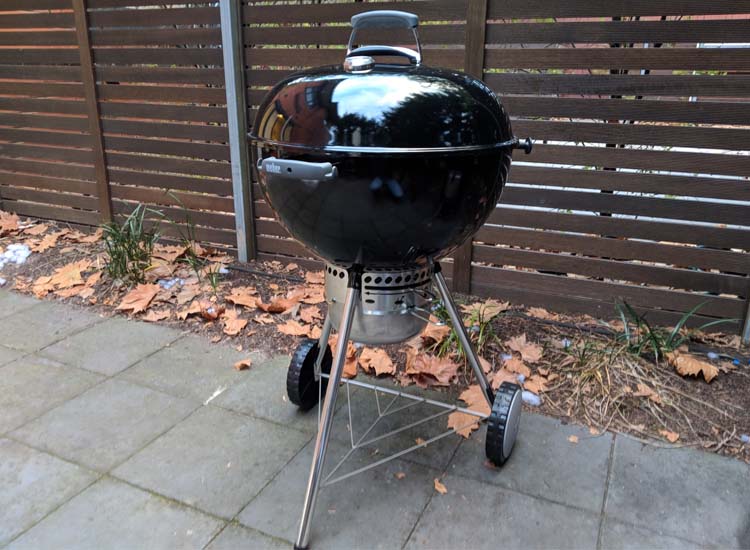
While a kettle grill isn’t technically a smoker, they are one of the most commonly owned pieces of live-fire cooking apparatus and can be used to smoke small amounts of food fairly easily. These are cheap, readily available and that makes them one of our favorite types of grill smoker combo.
If you happen to have one of these sitting in your garage right now, it can be an easy way to start smoking food.
How do kettle grills work?
Turing a kettle grill into a smoker requires a little rearrangement of the charcoal inside, some additional wood chips, and a water pan.
There are several clever methods for smoking on a Kettle grill, including the Snake method.
You arrange unlit coals two briquettes deep and two high (exact arrangement can vary) in a “C” shape.
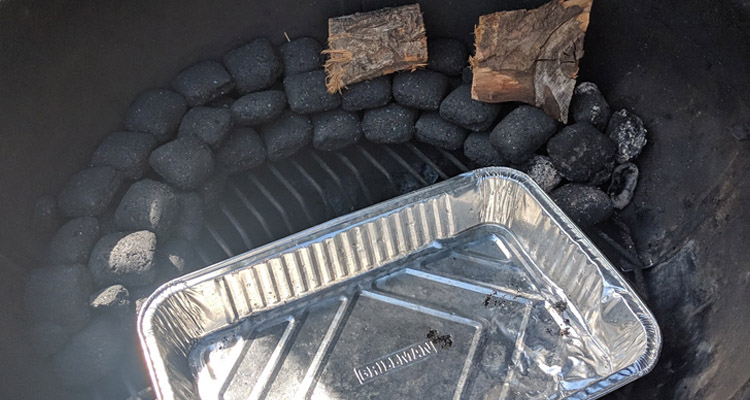
You then fire up a few hot briquettes and place them at the start of the Snake.
The burning coals will gradually light the unlit ones, keeping the temperature low and increasing the burn time.
The wood chunks are placed on top of the lit coals to create smoke, and a water pan set on the grill grate above them. The added water helps to reflect some of the heat and add moisture to the inside of the grill.
The food being smoked it then placed on the opposite side to the banked coals and the lid of the grill placed on so that the lid’s air vent is above the food.
Air is then drawn up through the vent in the base of the grill, over the coals, wood chips, and water pan. This creates smoke and moisture which flows over the food on the way out of the lid vent, flavoring it while the indirect heat of coals cooks it.
Pros
- If you have a kettle grill handy, you don’t have to go out and buy a smoker
- Wood chips and water pan are reasonably easy to find, and you don’t have to make any structural changes to your kettle grill to use it as a smoker
Cons
- Because it’s not designed to be used as a smoker, it can be difficult to accurately control the airflow, and therefore the amount of smoke and heat in a kettle grill, so it’s hard to get consistent results
- You’re still using charcoal, so there is always going to be some cleanup to do
- Classic design that works
- Ash catcher for easy clean up
- Portable
- Lid thermometer inaccuracte
- Three leg design could be more stable
Who should buy a kettle grill?
The best thing about using a kettle grill as a smoker is that you probably already have one!
Kettle grills make great jery-rigged charcoal smokers and would suit someone who is mostly looking for a grill, but who wants the option to be able to smoke food on the odd occasion.
Learn more in our guide to the best charcoal grills.
Things to Consider Before Buying a Smoker
What is your budget?
The amount you can spend is going to dictate what type of smoker you should buy.
If your budget is under $500, you should probably avoid an offset smoker as everything in your budget will be cheaply made and difficult to work with.
You’ll also be stuck in the budget range for pellet grills where quality isn’t necessarily fantastic.
Between $200-$500 you have a lot of great options in the charcoal, propane, and electric family.
Finally, if you can get over $1,000 your options open right up and you can look at the best brands of offset smoker like Yoder, a quality Kamado like the
Type of fuel
Budget dictates your options, but within your budget, you still have to choose which fuel source or type of smoker to go with.
We cover this in pretty decent detail above, and in our individual buying guides.
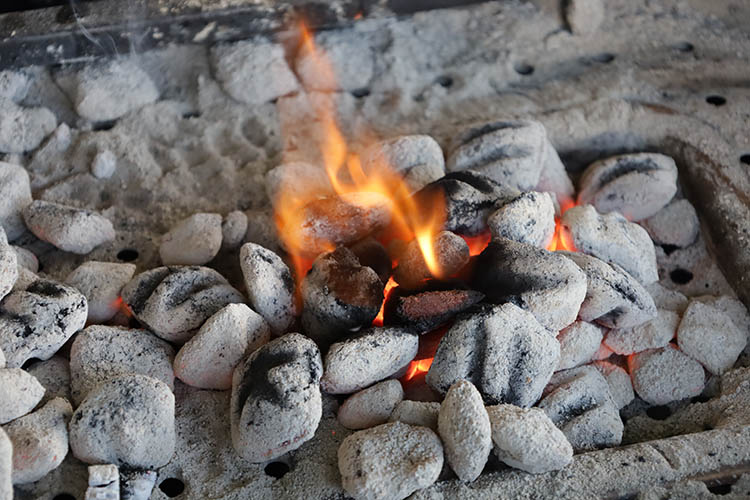
As a general rule of thumb, I recommend a charcoal smoker to anyone who wants to learn the art of barbecue, a pellet smoker to someone who just wants great food and can spend some money, and a propane smoker for someone who doesn’t have a lot to spend but wants the set and forget convenience of a pellet smoker.
I suggest you leave the offset until your second or third smoker, and finally, a Kamado is a good option if you have a decent budget and want a grill/smoker combo.
The number of people you will be cooking for?
All types of smokers come in a variety of sizes, although some like electric/propane tend to run on the large size.
You can usually compare the size of the cooking area in square inches, and many manufacturers will provide helpful guidance in terms of how many chickens or burgers you can fit.
One thing to watch out for is that just because a smoker has a certain amount of square inches, doesn’t mean you can actually fit what you plan to cook.
Many people have been disappointed when they found out their “huge” electric smoker couldn’t fit a full packer brisket or rack of ribs without cutting it.
Or course you can always smoke a smaller brisket with no problems, like we did in our electric smoker brisket recipe.
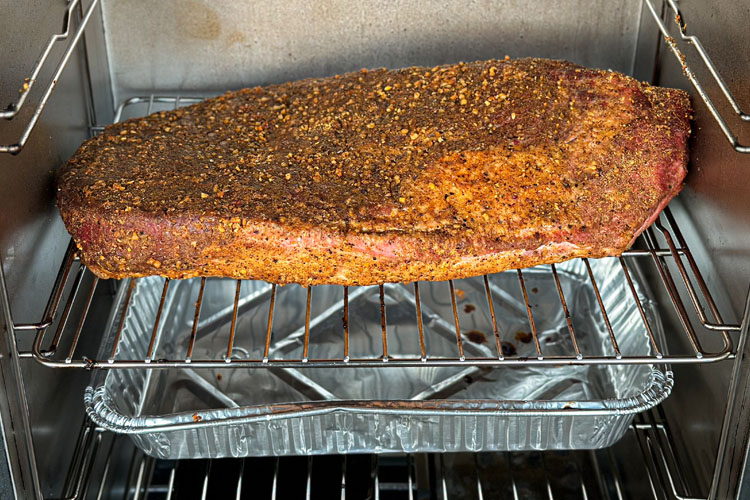
Do you need it to be portable?
Smokers aren’t typically the most portable devices. That said, some manufacturers do make decent units for taking camping or tailgating.
These are almost always a compact size to fit easily in your trunk so you will give up space for this feature.
Our favorite portable pellet grill is the Traeger Tailgater, while the PKTX is an excellent charcoal grill for traveling that can also smoke.
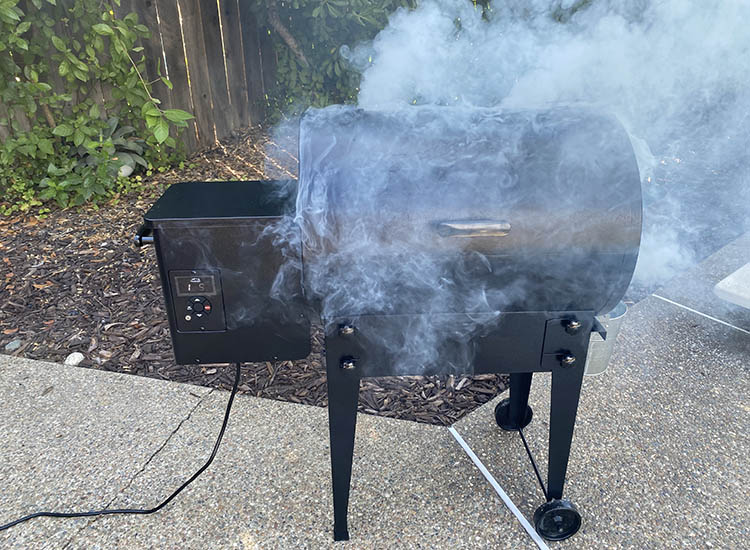
Wrapping it up
There you have it. The seven most common types of smokers in all their glory. If one of them jumps off the page at you, it’s probably because that’s the smoker for you.
Rather than overthink the details, just buy the one that seems right for you and get smoking. A lot of learning how to smoke food comes under the axiom of ‘learn by doing’ and, at the end of the day, you’ll be rewarded for your efforts with some fantastic food.
Do you think there is a ‘best’ type of smoker out there? Or do you have any tips for someone just getting into smoking meat? Please let us know in the comments below.

